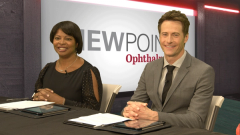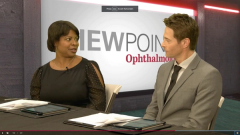
Poll: What are the biggest challenges in DME Management?
A panel of retina experts discussed the challenges presented in the management of DME. Which do you think is the biggest of these challenges?
Diabetic macular edema (DME) is a complex ocular disease that can present many challenges during the patient's treatment process. In the panel discussion, Prethy Rao, MD, MPH, shares some of the initial challenges that patients and providers may face at the beginning of treatment. Adrienne Scott, MD, shares some of the practical, continued challenges that are presented during the ongoing treatment process.
Which of these do you consider the biggest challenge when treating DME?
Episodes in this series

Nathan Steinle, MD: Let’s switch topics to DME [diabetic macular edema]. Dr Rao, this is a different patient population with some unique challenges. Tell us about your typical patient with DME and why they might be different and difficult to treat vs the AMD [age-related macular degeneration] population.
Prethy Rao, MD, MPH: It’s almost like night and day: the complete opposite end of the spectrum. We’re dealing with more of an ocular and systemic disease rather than a purely ocular disease. We’re fighting not only their eye disease. Are they able to control their diabetes? That plays a role. First, we look at how well their systemic will control for diabetes.
The second thing is that, unfortunately, a lot of patients with diabetes don’t recognize they have diabetes for a while, so there’s a delayed presentation. What we’re doing with DME is the chronicity of it. That DME might have been there for months or years, so we’re starting behind the eight ball. We’re dealing with all these inflammatory factors that are at a very high level. It’s not only a VEGF-driven process. It’s the inflammation part. Multiple biomarkers contribute to this disease process, so we’re dealing with different factors.
Nathan Steinle, MD: It’s a very heterogeneous disease. How do you account for your success? How do you market your success? What do you consider success?
Adrienne Scott, MD: Generally speaking, you want to have a patient maximize his or her visual outcome, but treatment burden is very important to consider. This is a working-age population. Unfortunately, coverage for these types of treatments is tied to certain employment characteristics. Are they insured? How are they insured? Unfortunately, this dictates and influences what treatments we recommend. You have systemic disease, and that’s going to influence how frequently they can come in. Other appointments may take precedence over their injection appointment. You have the working-age factor—taking time off to come for frequent injections is often a challenge. We’re fighting social determinants of health as well. We’re treating diabetic macular edema, but we also have to work with the patient’s ability to undergo these particular treatment regimens.
Transcript edited for clarity
Newsletter
Keep your retina practice on the forefront—subscribe for expert analysis and emerging trends in retinal disease management.



















































